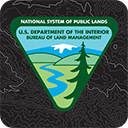Non-energy minerals on public lands are a significant contributor to economic activity and jobs
By Derrick Henry, Public Affairs Specialist
In addition to vast oil, gas and coal resources, BLM-managed public lands offer other opportunities for mineral development. In communities across the country, mining provides jobs, economic activity and important commodities that are essential to maintaining a high quality of life. Our latest Sound Investment brochure offers fiscal year 2021 information regarding non-energy mineral activities and their economic contributions.
For example, your box of baking soda probably contains trona from BLM-managed public land in Wyoming. Approximately 18 million tons of trona were produced in Wyoming. Trona is used for glass, paper products, laundry detergents, baking soda, and many other everyday items.
Public lands in Wyoming and other BLM states contain various minerals such as potash, phosphate, sodium, and gilsonite. These minerals are used to make fertilizers, glass, and paper. Additional minerals include such materials as sand and gravel, which are needed for building roads, as well as soil and clay. Overall, non-energy minerals activity on BLM-managed public lands in fiscal year 2021 accounted for about $48.8 billion in economic output and supported about 162,000 jobs nationwide.
In Nevada, which has robust non-energy minerals opportunities, the activities related to this sector generated $27.6 billion in economic output and supported 94,000 jobs. In Wyoming, where trona and other minerals are mined, these activities generated $1.1 billion in economic output and supported 56,000 jobs. BLM Wyoming also manages public land in Nebraska.
You can learn more about how authorized use and management of BLM-administered lands supported $201 billion in economic output and nearly 783,000 jobs across the country in fiscal year 2021 at our Sound Investment webpage.
BLM employees take government policy and turn it into real work on the ground. This article is based on information from the BLM’s 2022 Sound Investment brochure. The brochure, which uses fiscal year 2021 data, highlights the various activities that take place on public lands, and their contributions to the national economy. In fiscal year 2021, authorized use and management of BLM-administered lands supported $201 billion in economic output and nearly 783,000 jobs across the country.
